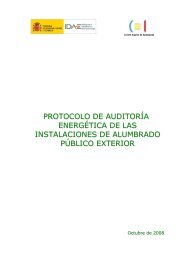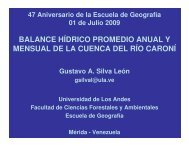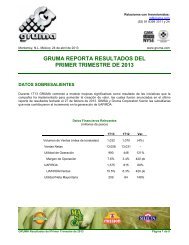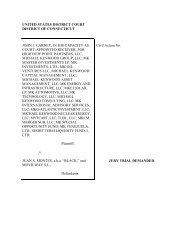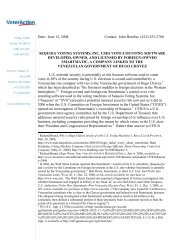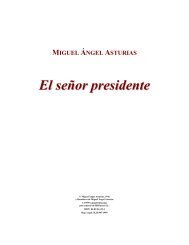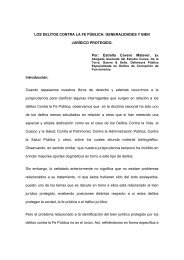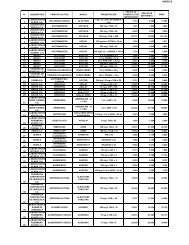broschuere ee zahlen en bf
broschuere ee zahlen en bf
broschuere ee zahlen en bf
Create successful ePaper yourself
Turn your PDF publications into a flip-book with our unique Google optimized e-Paper software.
<strong>en</strong>eWaBle <strong>en</strong>erGIes In the eUropean UnIon<br />
58 R<strong>en</strong>ewable Energy Sources in Figures<br />
As well as the national target, the Directive lays down a uniform target for r<strong>en</strong>ewable <strong>en</strong>ergy<br />
in the transport sector of at least 10 % of <strong>en</strong>ergy consumption. Thus in addition to bio fuels,<br />
the Member States can also count electricity from r<strong>en</strong>ewable <strong>en</strong>ergies that is used for rail<br />
traffic or electric vehicles.<br />
For achieving the national targets, the Directive largely puts its faith in national promotion<br />
programmes. The Member States are fr<strong>ee</strong> in the design of their promotion system, so that<br />
they can exploit their pot<strong>en</strong>tial in the best possible way. In addition, the Directive introduces<br />
flexible cooperation mechanisms which give Member States the opportunity to cooperate if<br />
necessary to m<strong>ee</strong>t their targets. These cooperation mechanisms are: statistical transfer of surpluses<br />
of r<strong>en</strong>ewable <strong>en</strong>ergy, joint projects for promoting r<strong>en</strong>ewable <strong>en</strong>ergy, or (partial) merging<br />
of national promotion systems of two or more Member States.<br />
The Directive provides that the Member States shall approve national action plans for<br />
achieving their targets, and shall submit regular progress reports to the Commission until<br />
2020. It also requires that electricity from r<strong>en</strong>ewable sources is to be giv<strong>en</strong> priority access to<br />
the grid and defines – for the first time – sustainability requirem<strong>en</strong>ts for the production of<br />
biomass for use as <strong>en</strong>ergy. However, the sustainability criteria in the Directive apply only to<br />
biofuels and biog<strong>en</strong>ic liquid fuels. In February 2010 the European Commission pres<strong>en</strong>ted a<br />
report on sustainability criteria for gaseous and solid bio<strong>en</strong>ergy. Unlike the binding sustainability<br />
criteria in the directive, however, the report merely contains recomm<strong>en</strong>dations for<br />
the Member States.<br />
The Directive introduces the first overall legislation in the EU for all sectors of r<strong>en</strong>ewable <strong>en</strong>ergy:<br />
power, heat/cold, and transport. The Directive will thus replace the existing EU-wide<br />
provisions on the promotion of r<strong>en</strong>ewable <strong>en</strong>ergy, which are due to expire on 1.1.2012, the<br />
EU Directive on the promotion of r<strong>en</strong>ewable <strong>en</strong>ergy sources in the electricity market, and the<br />
Biofuels Directive. The Electricity Directive which came into force in 2001 provides for an increase<br />
in the perc<strong>en</strong>tage of electricity g<strong>en</strong>eration due to r<strong>en</strong>ewable <strong>en</strong>ergy from 14 % in 1997<br />
to 21 % by 2010 in the EU-25. The Biofuels Directive lays down a target of 5.75 % for biofuels<br />
as a perc<strong>en</strong>tage of fuel consumption in 2010.<br />
The new, all-embracing EU Directive on the promotion of r<strong>en</strong>ewable <strong>en</strong>ergy sources creates a<br />
reliable EU-wide legal framework for the necessary investm<strong>en</strong>ts and thereby lays the foundations<br />
for continuing successful expansion of r<strong>en</strong>ewable <strong>en</strong>ergy up to 2020.




